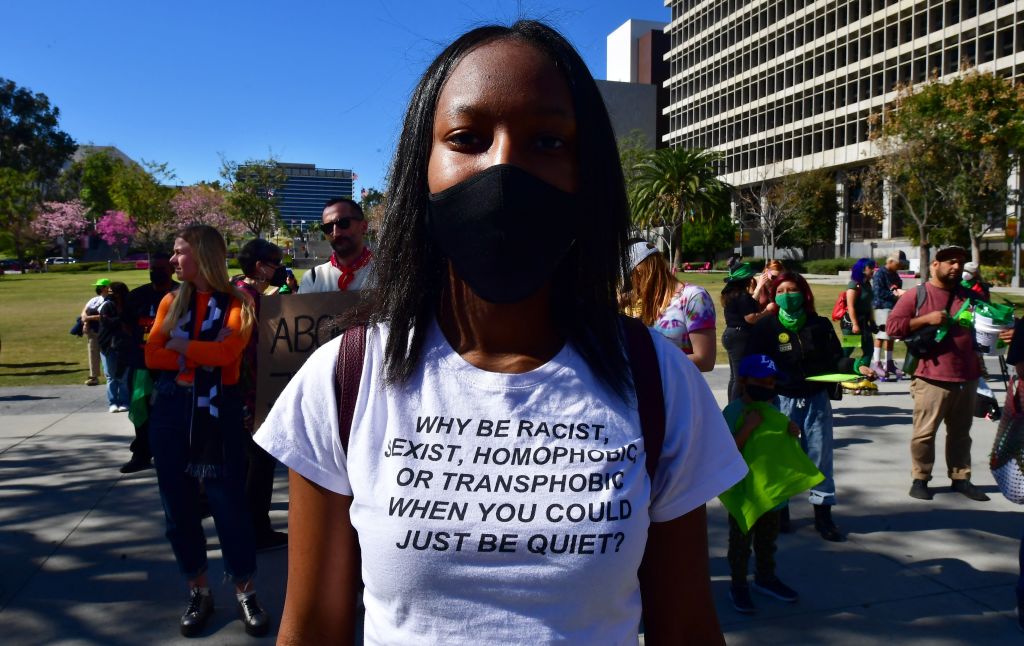Stop calling the teens “mentally ill.” They are having a healthy reaction to an insane world.

Nearly half of America’s teens reported feeling “persistently sad or hopeless” during the pandemic, according to a CDC study quantifying the impact of COVID on adolescent mental health.
The anguish was not distributed equally, however. Almost 60 percent of girls experienced debilitating sadness or hopelessness, compared to 31 percent of boys. Demonstrating the depth of the girls’ despair, hospitalizations for attempted suicide increased by over 50 percent during the pandemic, according to an earlier CDC study.
In lengthy features, The New York Times and The Atlantic unpacked the epidemic of teen sadness, pointing to neuroscience, puberty onset, parenting styles and pandemic loneliness as key drivers. The coverage mimics that trotted out during Mental Health Awareness Month, where outlets from 60 Minutes to LinkedIn thought leaders parrot surgeon general advisories about American teens in crisis.
To be sure, the widespread despondency is a heartbreaking problem that demands attention. But what if the dominant framing is both missing the point and compounding the issue? What if the teens are not “mentally ill,” but rather having a normal, healthy response to a highly dysfunctional world?
In 1963, Betty Friedan sparked a national conversation on female mental health with release of The Feminine Mystique. In investigating “the problem that has no name,” she found that housewives believed themselves flawed for failing to find rapture in suburban domesticity—as the myth of the happy housewife instructed they should. Alone and ashamed, this population pursed tranquilizers, redecorations, extramarital affairs or yet another child to squelch their angst and perceived abnormality. Friedan’s work provided voice and validation to the collective dissatisfaction, affirming that the torment was not a personal failure. Rather, it was symptomatic of a larger cultural disease—one that stripped women of their wartime employment, freedom and connection to a larger cause.
Friedan’s reframing of individual illness as cultural sickness brings to mind the theory of positive disintegration (TPD). Developed by 20th century Polish psychiatrist Kazimierz Dąbrowski, the framework considers some maladjustment as positive—evoking the old chestnut that being well-adjusted to a sick society is not a sign of good mental health. Whereas traditional mental health paradigms interpret anxiety, depression, doubt and groundlessness as pathologies to be medicated, TPD believes these disintegrative states can be useful harbingers of self (and societal) actualization. Dabrowski considered them waystations in the painful process of separating from “what is”—toxic (but ubiquitous) social norms—and building a life around higher values—“what ought to be.”
Applying the work of Friedan and Dabrowski to today’s struggling teens provides an empowering rethink of the CDC statistics and dominant conversation. Under this new perspective, perhaps adolescents are actually the well-adjusted ones. With their comparative innocence and exquisite sensitivity, perhaps they are best able to perceive the structural violence that results from living in an imperialist, capitalist, white supremacist, heteronormative patriarchy.
And in many respects, how could they not be unsettled? These digital natives came of age in an era where more than half of U.S. kids get smartphones by age 11. All they have known is catastrophe—mass shootings, climate change, pandemic, war, financial crisis, institutional dysfunction and growing inequality. It is no wonder that more than half of the 16- to 25-year-olds in a 2021 Lancet study on adolescent climate anxiety reported believing that humanity is doomed.
Perhaps adolescents are actually the well-adjusted ones. With their comparative innocence and exquisite sensitivity, perhaps they are best able to perceive the structural violence that results from living in an imperialist, capitalist, white supremacist, heteronormative patriarchy.
Compounding the woe, mass culture and social media highlight reels paint a picture that everything is excellent, never better. Just as mid-century housewives were conditioned to believe that their stifling existences represented “the most soul-satisfying life any woman could espouse,” Gen Z has been reared under that same dissociated, materialist, post war worldview.
You think too much, the Boomer mentality instructs. Just go to college, find a nice boy to marry, and park your money in the market for an 8 percent YoY return… you’ll be golden! Questioning types who point to, say, the epidemic of gun violence, ballooning student debt, divorce rates or catastrophic IPCC reports are essentially gaslit—stigmatized as aberrant, diagnosed and medicated. Borderline personality disorder is the new “hysteria.”
Ultimately, the ever-worsening rates of mental illness suggest that the individualistic approach of SSRIs and stigmatization is not yielding results, but rather exacerbating the anomie.
So what is the alternative?
Validation is a start. Teens: You are not alone, and you are not ill. Your anguish is healthy. It means that you are aware, that you care deeply about the future.
And so, where possible, hold on. The agony will not last forever. TPD promises, and Greta Thunberg’s story attests, that there is another side to the disintegrative episodes. With faith, support and continued resilience, you will figure out how to channel your grief into a purpose-driven life.
Your vision of a better society—the world as it ought to be—is correct. You are the canaries in the coal mine, forcing the rest of us to wake up and look at ourselves. Keep feeling and keep fighting, for people will soon recognize that your problem has a name. It is not mental illness. It is positive maladjustment.
Sign and share Ms.’s relaunched “We Have Had Abortions” petition—whether you yourself have had an abortion, or simply stand in solidarity with those who have—to let the Supreme Court, Congress and the White House know: We will not give up the right to safe, legal, accessible abortion.
Up next:





